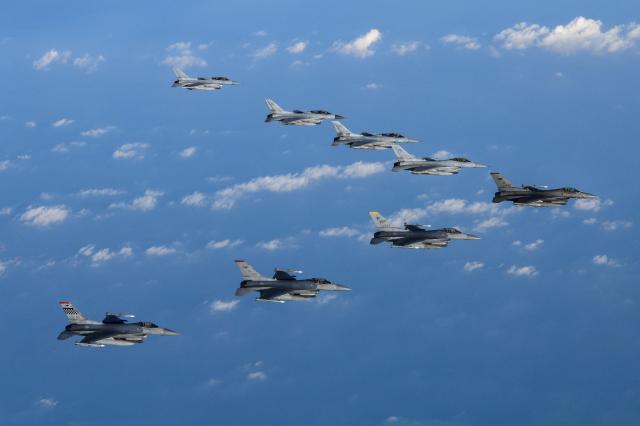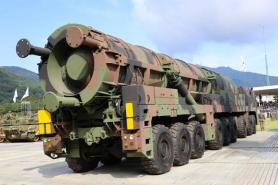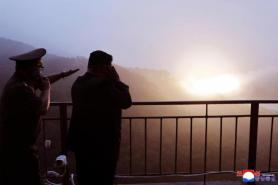
The supersonic bomber, escorted by fighter jets from the three countries, conducted precision strike exercises in the overlapping air defense identification zones (ADIZ) of South Korea and Japan east of Jeju Island.
Capable of reaching speeds up to Mach 1.25 and with a range of up to 12,000 kilometers, the B-1B can deploy from Guam to the Korean Peninsula within two hours. The bomber can deliver up to 57 tons of conventional weapons, more than other U.S. strategic bombers, such as the B-2 and B-52.
On Thursday, North Korea test-fired what it claimed to be a new solid-fuel ICBM dubbed the Hwasong-19, capable of reaching the United States, ahead of the Nov. 5 U.S. presidential election.
Sunday’s exercise “aims to demonstrate the integrated deterrence capability of the South Korea-U.S. alliance and the strong resolve and capability of security cooperation between South Korea, the U.S., and Japan to counter and deter North Korea’s escalating nuclear and missile threats,” the JCS said.
It marks the fourth deployment of U.S. strategic bombers to the Korean Peninsula and the second trilateral air exercise this year, according to the JCS.
Copyright ⓒ Aju Press All rights reserved.



